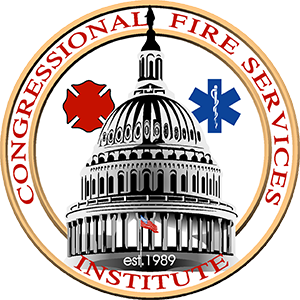The U.S. Fire Administration
The U.S. Fire Administration (USFA) plays a vital role at the national level as the primary representative of the fire and emergency services in the federal government.
USFA ensures that the fire service is prepared to respond to all hazards and is the lead federal agency for fire data collection, public fire education, fire research, and fire service training.
USFA offers classes on critical topics such as emergency medical services, fire prevention, arson investigation, hazardous materials incidents, incident management, leadership and executive development, planning and information management, responder health and safety, wildland and the urban interface, and much more.
Each year, USFA provides training to approximately 100,000 fire and emergency service personnel through the National Fire Academy (NFA).
Through the vital funding of the State Fire Training Grants, USFA is also able to support much-needed training in the states, and thus reach a larger audience.
Training
USFA’s outreach and educational materials help to ensure the safety of both first responders and community members.
Click here to see materials provided by USFA for public consumption.
Click here to see materials provided by USFA for use in community outreach.
Public Education
USFA’s research provides vital information affecting fire and life safety in America.
Click here to see publications created by USFA that help to educate both the public and the fire and emergency services.
Fire Research
Data collection ensures that USFA and the fire service are able to make data-driven decisions.
Click here to learn about the National Fire Incident Reporting System (NFIRS).
Click here to learn about the statistics USFA compiles.
Data Collection
Funding Needs of the U.S. Fire Administration
Personnel: Compensation for existing personnel is expected to continue to increase with inflation, COLAs, etc. Additional personnel will also be needed in the future to support the growth of USFA training, research, investigations, and other initiatives. USFA must have room in the authorization for growth.
Programs and Training: USFA is looking to offer additional programs, including initiatives for wildfire and WUI, climate change, EMS activities, and more. Increasing the authorization provides flexibility for these programmatic upgrades.
Data Collection, Security, and Storage: USFA is working on upgrading the National Fire Incident Reporting System (NFIRS) to improve data capabilities and security. NFIRS is a voluntary reporting standard that fire departments use to report on the range of their activities, from fire to emergency medical services to severe weather and natural disasters. USFA must also comply with government-wide initiatives for data security and storage. Increasing USFA’s authorization will provide much-needed support for these critical technological upgrades.
Investigation of Major Fires: With last year’s passage of H.R.7077, USFA received the authority to investigate major fires. This new authority will require additional funding not budgeted in the existing authorization. Depending on the type and the scope of the fire (e.g. wildfire vs. major structural fire), costs could increase significantly. Authorizing additional funding for USFA will help to ensure that these new and critically important investigations do not impede USFA’s ongoing mission to educate, train, and collect data for the fire and emergency services.
Current Legislation
The Fire Grants and Safety Act (S.870/H.R.4090)
Summary: S.870 would reauthorize AFG, SAFER, and USFA through FY2030, extend the AFG and SAFER sunset to September 30, 2032, and increase the USFA authorization to $95 million. H.R.4090 is largely the same, but the reauthorization period would extend through FY2028 with a sunset in 2030 and it would separate the AFG and SAFER funding levels from the Consumer Price Index.
Status: S.870 passed the Senate by a vote of 95-2. H.R.4060 passed out of the House Science Committee by a vote of 29-0.
Past Legislation
The United States Fire Administration, AFG, and SAFER Program Reauthorization Act of 2017
Summary: The bill:
- Extended the AFG and SAFER authorizations through FY2023;
- Extended the sunset provisions for AFG and SAFER through September 30, 2024;
- Allowed USFA to develop an online training course on AFG and SAFER grant administration;
- Expanded SAFER hiring grant eligibility to cover the conversion of part-time or paid-on-call firefighters to full-time firefighters;
- Sought to minimize fraud, waste, abuse, and mismanagement; and
- Made other technical corrections to the AFG and SAFER statute.
Status: The legislation became law in the 115th Congress (P.L. 115-98).
AFG, SAFER, and USFA Reauthorization (FY2013 National Defense Authorization Act)
Summary: The legislation reauthorized the AFG and SAFER programs. For AFG, the bill made changes to the allocations to ensure that career, combination, and volunteer departments all receive funding from the grant programs. For SAFER, the bill added in recruitment and retention grants and made changes to the grant period.
Status: The legislation became law as part of the NDAA in the 112th Congress (P.L. 112-239).
U.S. Fire Administration Reauthorization Act of 2008
Summary: The bill reauthorized USFA through FY2012 and made a number of other changes, including provisions affecting the National Fire Academy and training, upgrades to the National Fire Incident Reporting System, fire service research, and more.
Status: The legislation became law in the 110th Congress (P.L. 110-376).
U.S. Fire Administration Reauthorization Act of 2003
Summary: The bill reauthorized USFA through FY2008, reestablished the presidential appointment of the U.S. Fire Administrator position, and made certain other changes.
Status: The legislation became law in the 108th Congress (P.L. 108-169).
